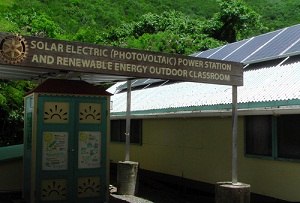Another roller coaster week for solar energy
 The solar industry is facing some tumultuous times. And while things remain sunny overall, some clouds are definitely on the horizon as solar is forced through its awkward puberty.
The solar industry is facing some tumultuous times. And while things remain sunny overall, some clouds are definitely on the horizon as solar is forced through its awkward puberty.
Germany has been the largest international driver of growth in the solar industry for the last few years, and it was poised to continue in that role. But recently two German ministers announced that they wanted to steeply reduce the country’s solar feed-in tariff (FiT), precisely because it has been so effective at expanding the amount of solar in the country. Under legislation that the German Economy Minister Philipp Roesler and Environment Minister Norbert Roettgen introduced the FiT could be reduced by as much 30 percent.
While the Germans may slow development of solar and stymie the industry, other players are coming up. The U.S. market is continuing to grow, and China is starting to ramp up domestic use of solar. The country recently announced a five-year investment plan that will boost its support of clean energy technologies. The country plans to invest $270 billion to support clean energy, including hydro and nuclear, according to a new Lux Research report. It plans to invest $36 billion in solar projects.
The Philadelphia Eagles plan to install both wind and photovoltaics on their stadium, which one-upped the rest of the teams in the NFL. They will add around 3 megawatts of solar and more wind, which together will provide more than enough power for their games at Lincoln Field. The team previously purchased all its power from green sources, but with this they’ll—at least for now—have the largest installation at an NFL field in the country.
Solar manufacturers are continuing to have a tough time and are taking some drastic moves to lessen the impact of a flooded market. For instance, First Solar’s fourth quarter 2011 and full year 2011 earnings were negative for the quarter and less than expected for the year. To circumvent the issue, the company is regrouping its strategy to focus on markets where unsubsidized solar can compete with other energy sources.
The flooded market also means that PV manufacturers have to find ways to add value. Sharp Solar snapped to the challenge recently when it introduced its SunSnap AC PV modules at the TED Conference in California. The product was designed for easy installation on roofs and other surfaces.
In more positive news for the solar industry, Natcore Technology recently cut the ribbon on its new solar research laboratory at now bankrupt Kodak’s Eastman campus. It’s good news both for the solar industry and Kodak’s bankruptcy process and will help the company’s debtors recoup some of their money.
However, most job growth in the solar industry has been on the installation side. For instance, OneRoof Energy said it would hire 100 employees in 2012 to keep up with the increased sales demands it’s seeing this year. The company has a different approach than most residential solar leasing companies. Rather than working with electricians and installers, it works with roofers to match systems with roofs.
One claim that’s dogged the solar industry is that it’s too expensive for low-income families. Well at least one solar installer Everyday Energy, is showing that’s not the case. The company focuses on installing solar on affordable or low-income housing in the San Diego area.



